The plan was to take a circular walk from Kelvedon to Coggeshall and back again via Feering through gentle Essex farming countryside. That was the promise of the guidebook, Walks In The Country Near London, but it had slept on our bookshelf since 2003 and it needed waking up. Or perhaps it’s fairer to say we needed waking up, because it seemed like we stumbled and fell at the first hurdle.
At the first left bend, turn right through a gate (863195 – FP fingerpost) and keep ahead along the field edge with a willow grove and the River Blackwater on your right. At the end of the first field, aim diagonally left across the next field to go through a gap in the hedge (this field may be ploughed/sown). Follow a line the width of a tractor that bisects the field – it may be an old field boundary or the remains of a green lane – keeping ahead to the skyline (862203).
I think by now we’d already missed the turn but I’d been seduced by the river.
We followed the instruction – aim diagonally left across the next field to go through a gap in the hedge (this field may be ploughed/sown) – but we were too late, and there was no gap in the hedge.
I guessed we could follow the river, since ultimately it led to the next place along the walk, but I didn’t reckon on how wide it wandered from our course. We surrendered to its meandering for a little while.
And all the way we waded through wide stretches of comfrey, acres of it all along the river under the willow trees, mixed with nettles so not ideal walking in shorts, but there were plenty of dock leaves.
Traditionally known as Saracen’s root, common comfrey is believed to have been brought to England by the Crusaders who had discovered its value as a healing agent – mucilaginous secretions strong enough to act as a bone-setting plaster and which gave it the nickname Knitbone.
The Crusaders passed it to monks for cultivation in their monastic herb gardens, dedicated to the care of the sick.
Elizabethan physicians and herbalists were never without it. A recipe from that time is for an ointment made from comfrey root boiled in sugar and liquorice, and mixed with coltsfoot, mallow and poppy seed. People also made comfrey tea for colds and bronchitis.
But times have changed. Once the panacea for all ills, comfrey is now under suspicion as a carcinogen. In line with its common name ‘Bruisewort’, research in America has shown that comfrey brakes down the red blood cells. At the same time, the Japanese are investigating how to harness its beneficial qualities: there is a research programme into the high protein and vitamin B content of the herb.
Jekka McVicar: Jekka’s Complete Herb Book.
Look closely and those distant splashes are a cormorant disappearing round the bend of the river.
And just here a startled pheasant flew up from under my feet.
Comfreys, Symphytum species, are a small but difficult group, variable in themselves and prone to hybridisation. The three commonest species tend to be used interchangeably in herbal medicine, etc. Common comfrey, S. officinale, is a bushy perennial with bristly leaves and spear-shaped, reticulated leaves. The flowers are pale cream or purplish and hang in bell-like clusters. It is a native, locally frequent by streams and rivers, in fens and ditches and on damp roadsides and waste ground. Russian comfrey, S. x uplandicum, is found in similar habitats and is now the commoner plant. It is a cross between common comfrey and Rough comfrey, S. asperum, and was probably first introduced to Britain as a fodder plant. The flowers are blue to violet or purplish when open. It back-crosses with S. officinale, forming a range of intermediate types. White comfrey, S. orientale, was introduced from west Russia and Turkey and is naturalised in hedgerows, churchyards and waste places, chiefly in eastern and southern England.
Vernacular names for all species: Knitbone, Nip-bone, Ass-ear. As can be guessed from its surviving common names, comfrey is still used as a healing poultice, for sprains, bruises and abrasions, and with more apparent success than almost any other herbal medicine. In this respect its users are carrying on a tradition which goes back to classical times. Comfrey (probably a corruption of the Latin ‘conferva’ a healing waterplant mentioned by Pliny, whose name is related to the verb ‘confervere’, to grow together) contains a substance called allantoin, which promotes healing in connective tissue. The medieval herbalists knew the plant as ‘bone-set’, and the root was lifted in spring, grated and used much as plaster of Paris is today. The whole plant was regarded as a master-healer and was used for everything from drawing splinters to easing backache.
Today, the uses are just as various and range from emergency backwoods first-aid to relieving the sting of a hard catch in a village cricket match.
Richard Mabey: Flora Britannica
Eventually it dawned on us that walking to Coggeshall by this route was going to take forever. We felt well and truly off the map, and it was looking more and more like rain, so reluctantly we turned back.
Through clouds of mayflies.
※
At Coggeshall we went straight to the Grange Barn, just as the rain came down.
The Grange Barn at Coggeshall is one of Europe’s oldest barns – probably the oldest, in fact. This mighty ‘Cathedral of the Harvest’ is estimated to date back to around 1140, about the same time as the foundation of Coggeshall Abbey. By the late 20th century it was a gap-roofed ruin, far too big for modern farming needs, far too expensive and difficult for one farmer to keep in repair in an era when the number of men employed around the farm had plummeted. But the Coggeshall Grange Barn Trust was formed by local enthusiasts, and with a little help from the district and county councils they put it back into tiptop order during the 1980s. It is a highly atmospheric building, with a bare dry forest of timbers rising and spreading to hold up the enormous area of tiles that make up the great barn roof.
Christopher Somerville: Walks In The Country Near London
Oak remained the material of choice in medieval England because of its strength and resistance to rot. The earliest surviving timber barns, also constructed in the thirteenth century, are framed in oak and stand at Cressing Temple and Coggeshall in Essex.
Malcolm Kirk: The Barn: Silent Spaces
※
One day we’ll have another go and hope to get all the way round.



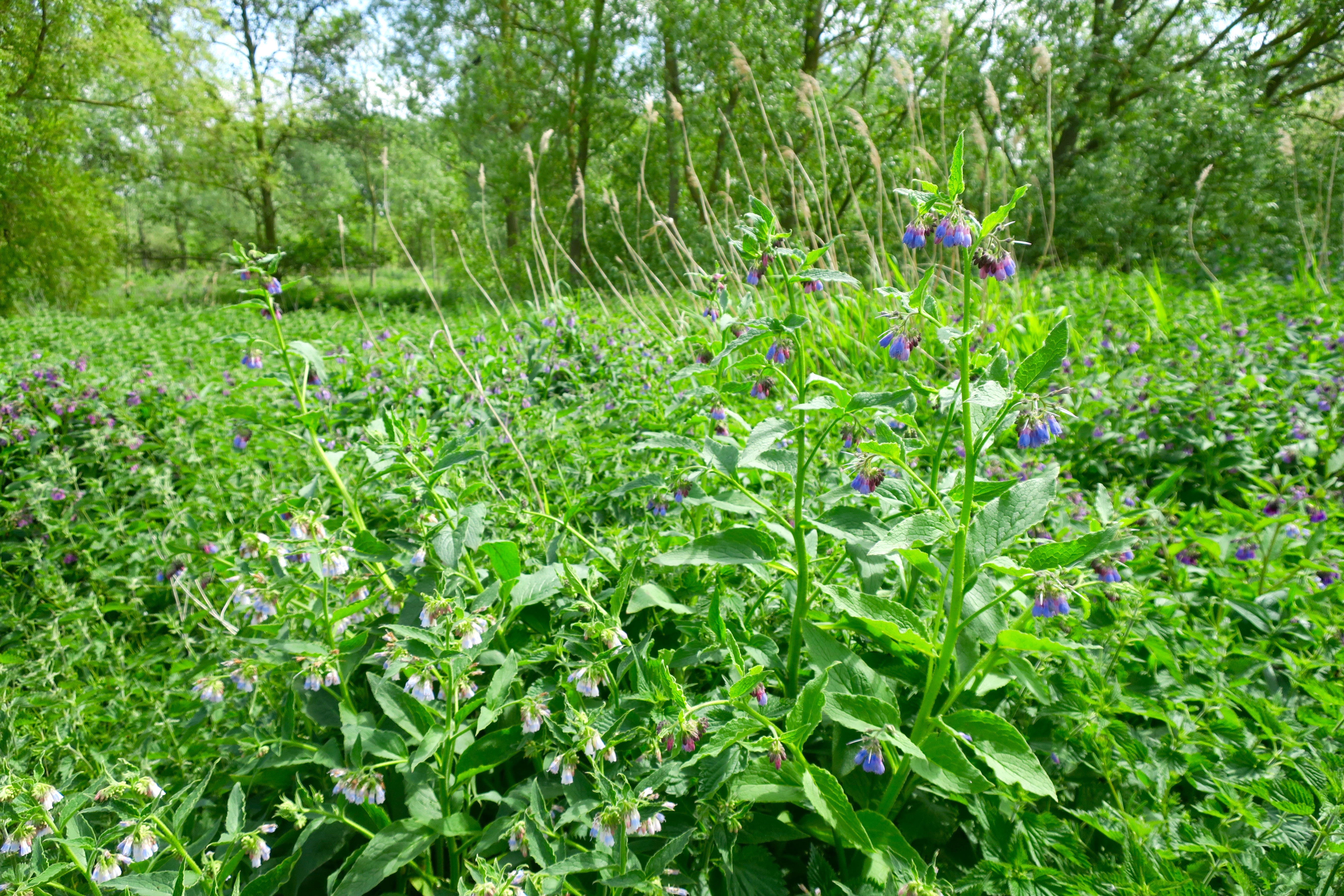


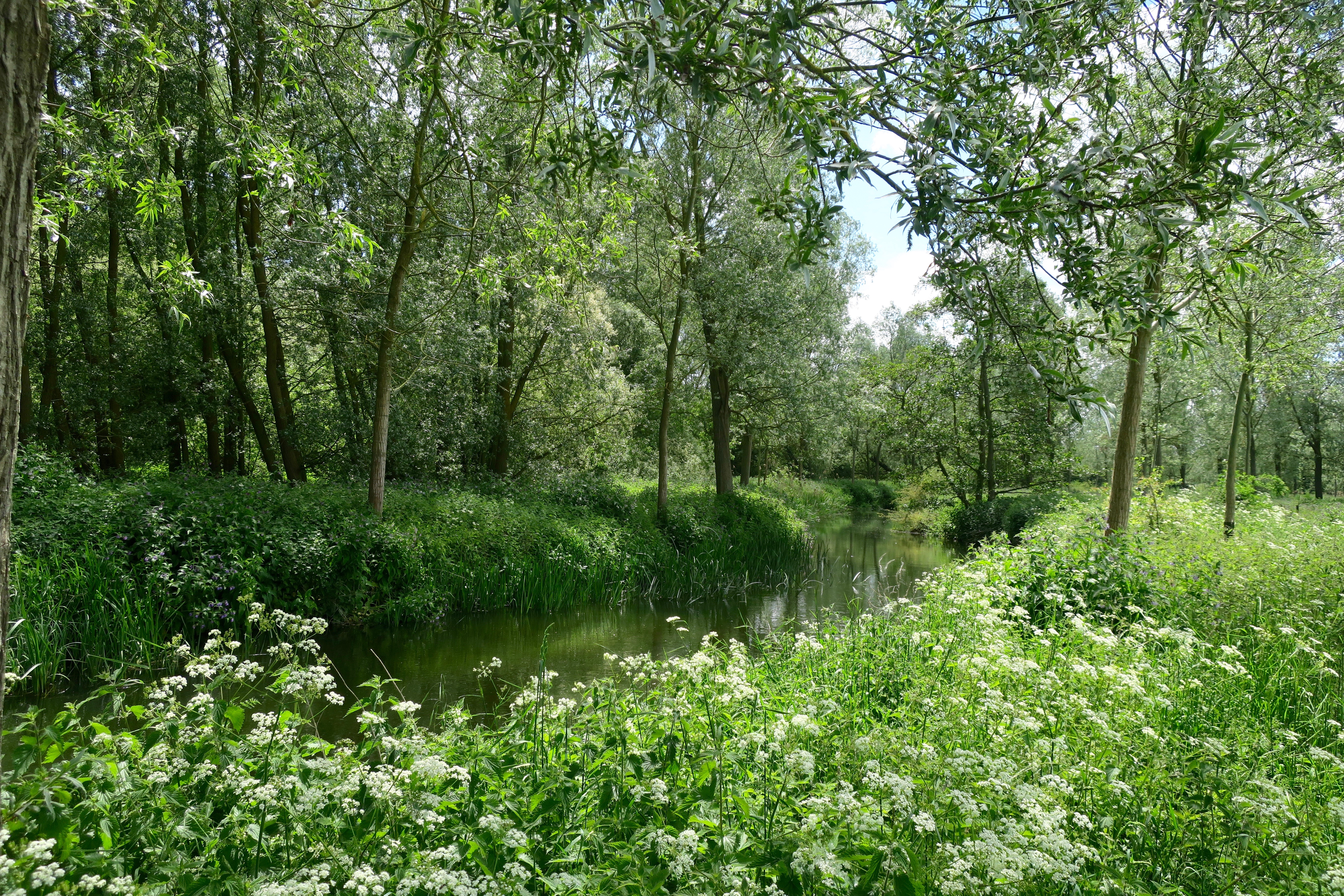

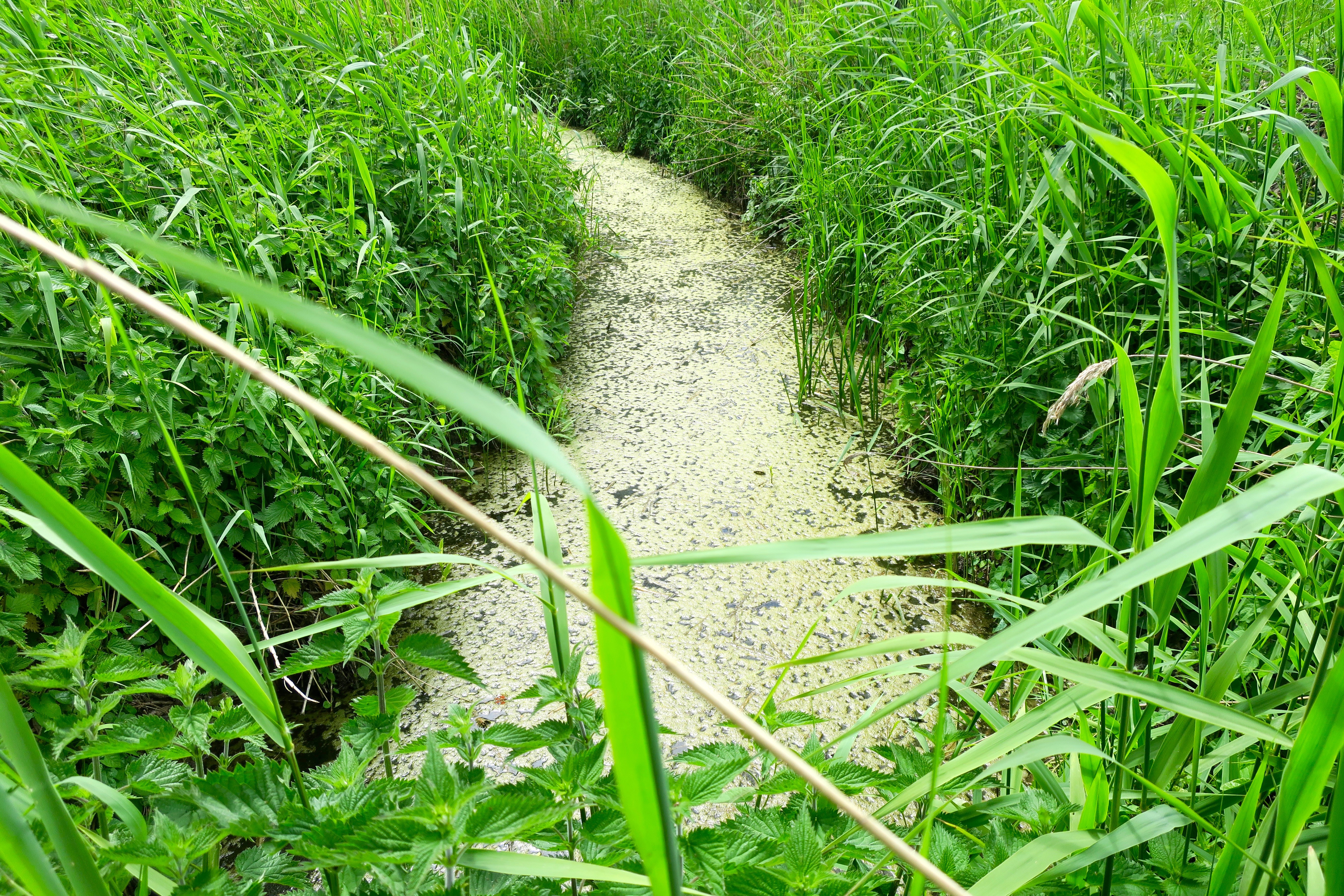

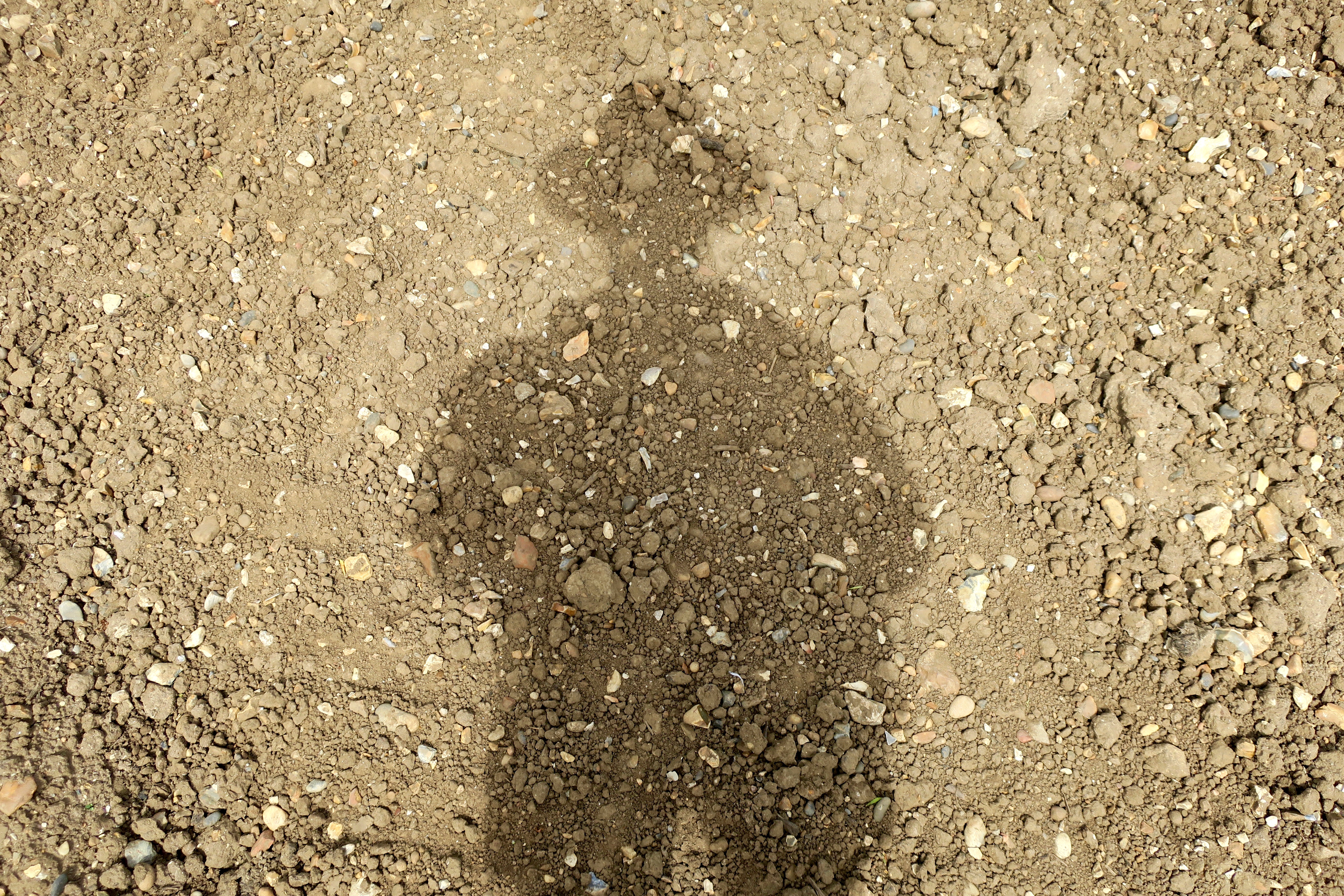





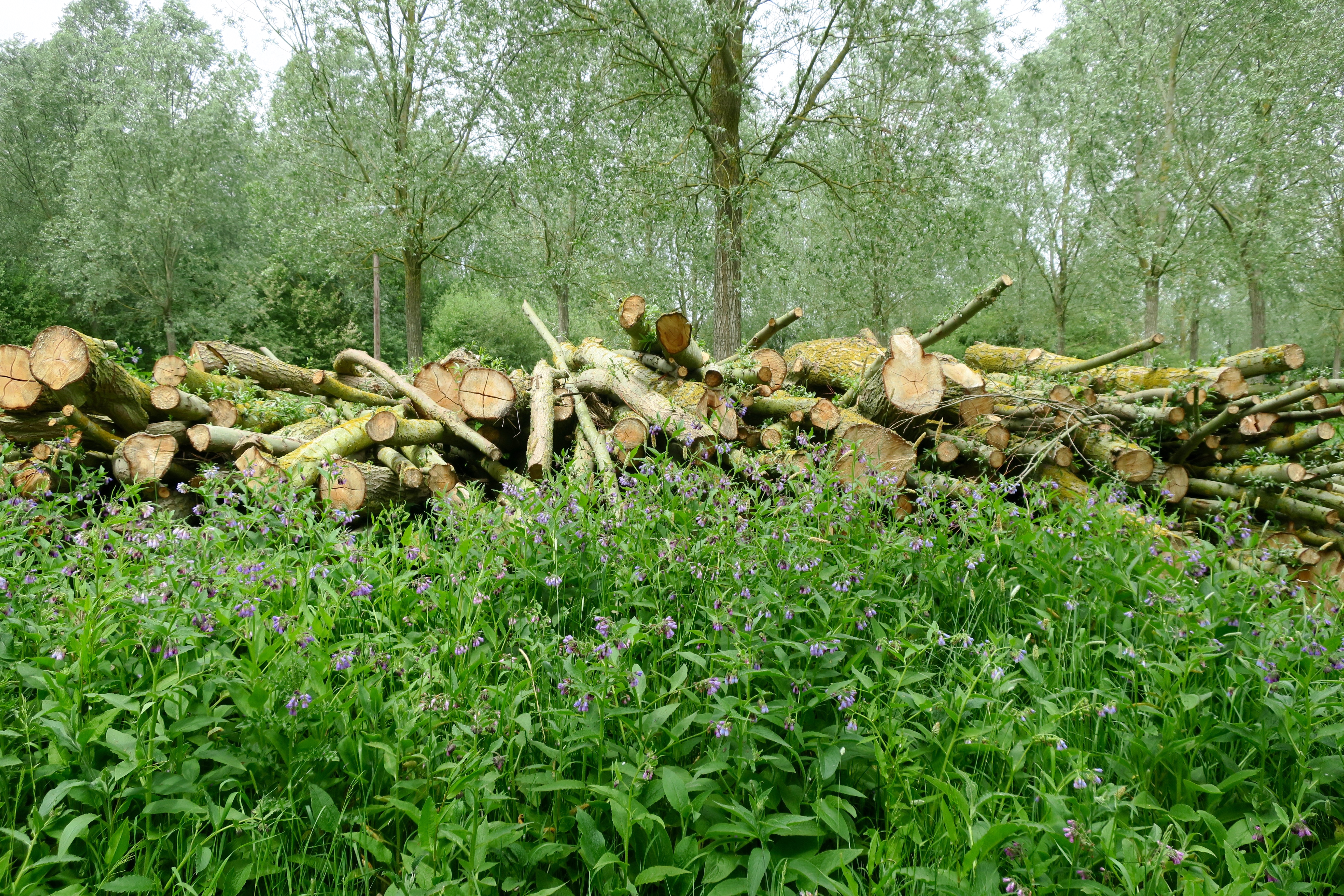







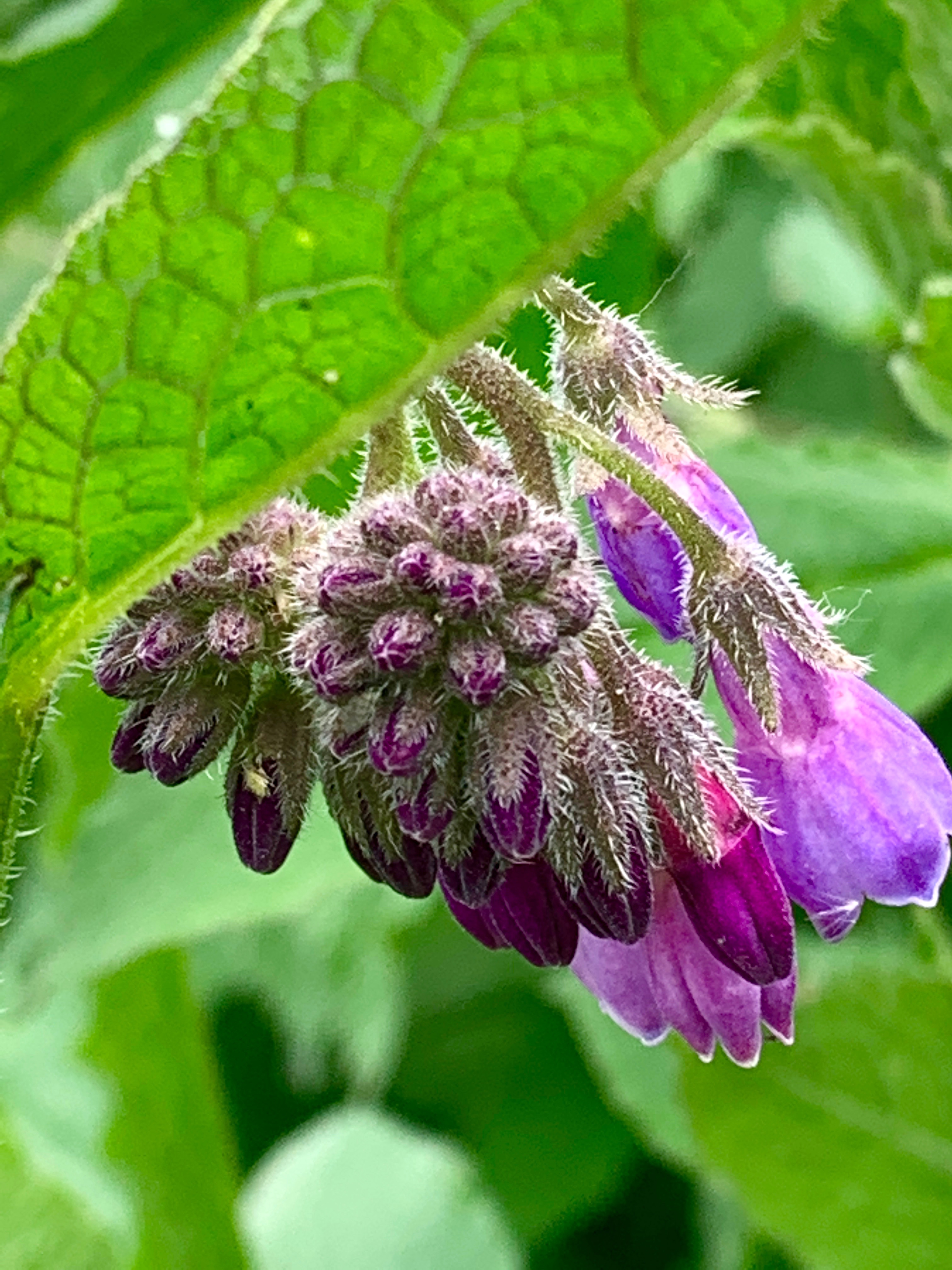
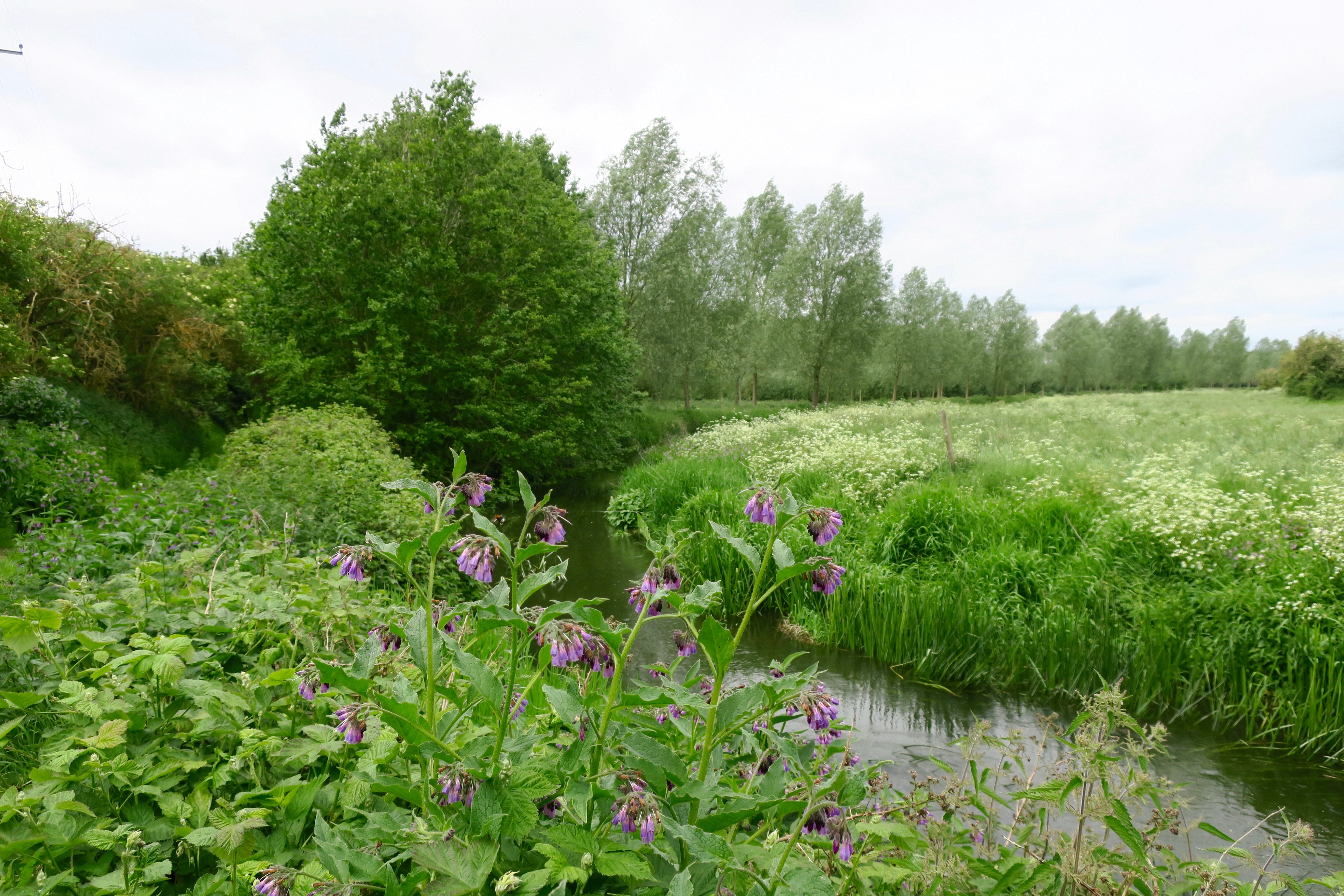
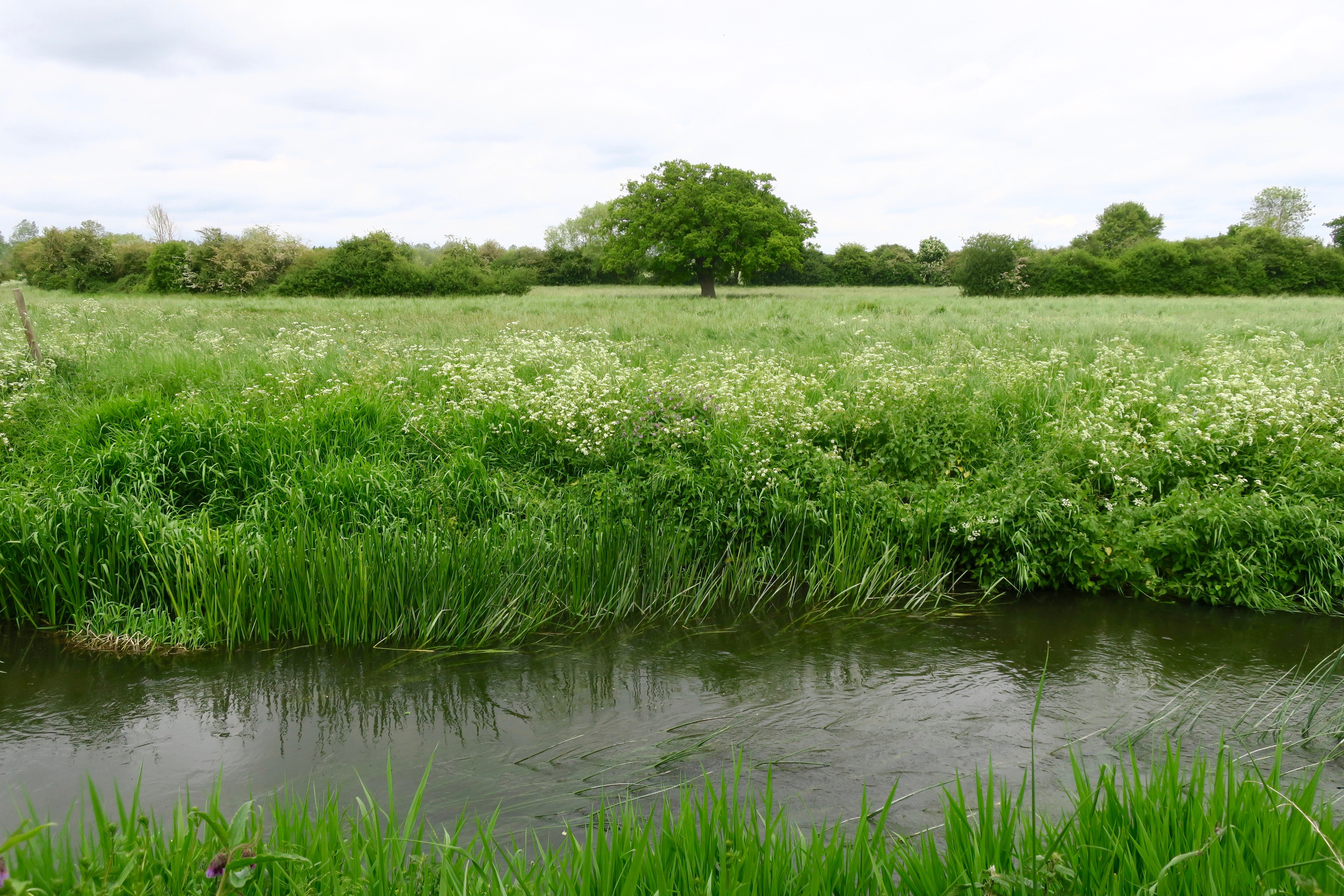
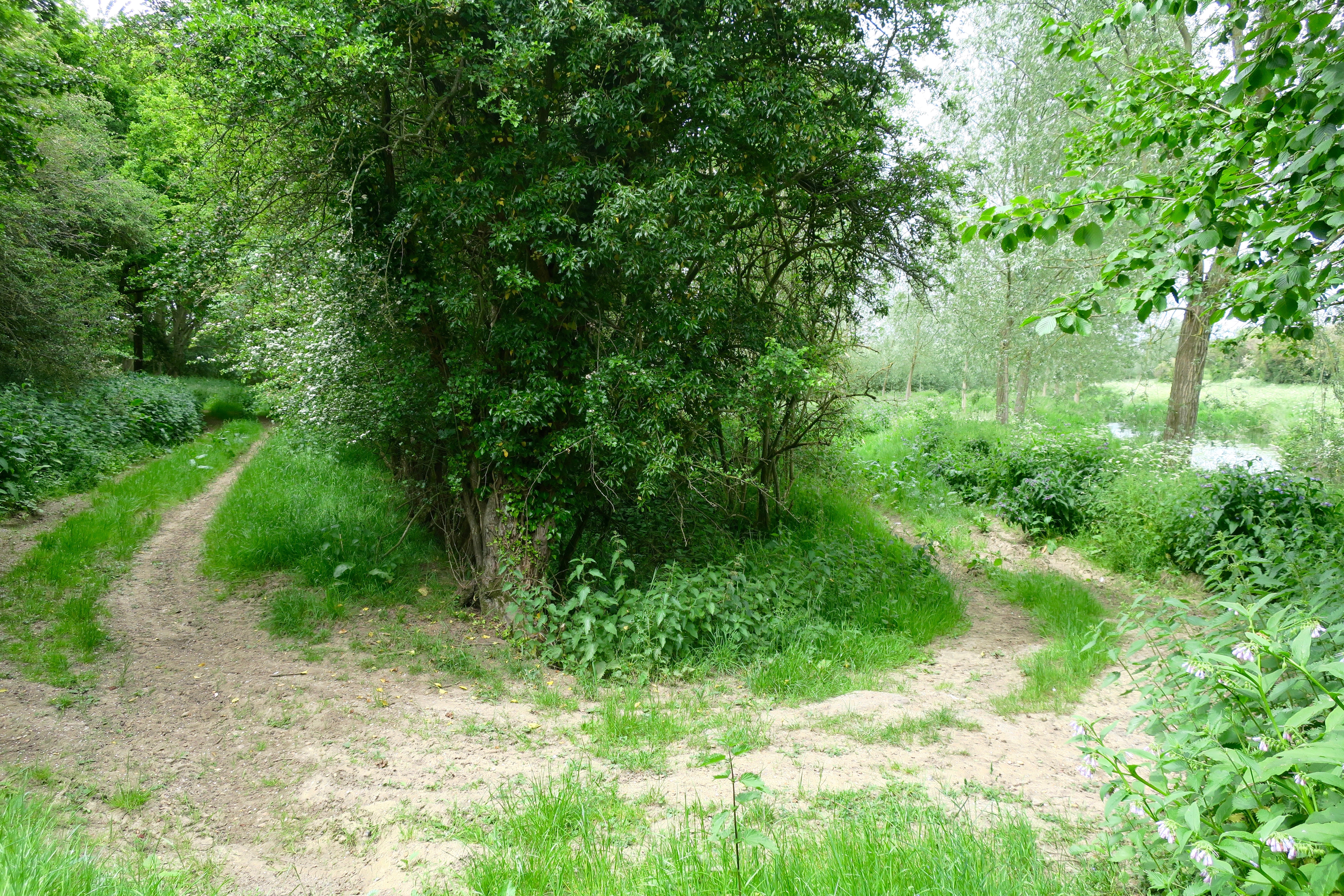
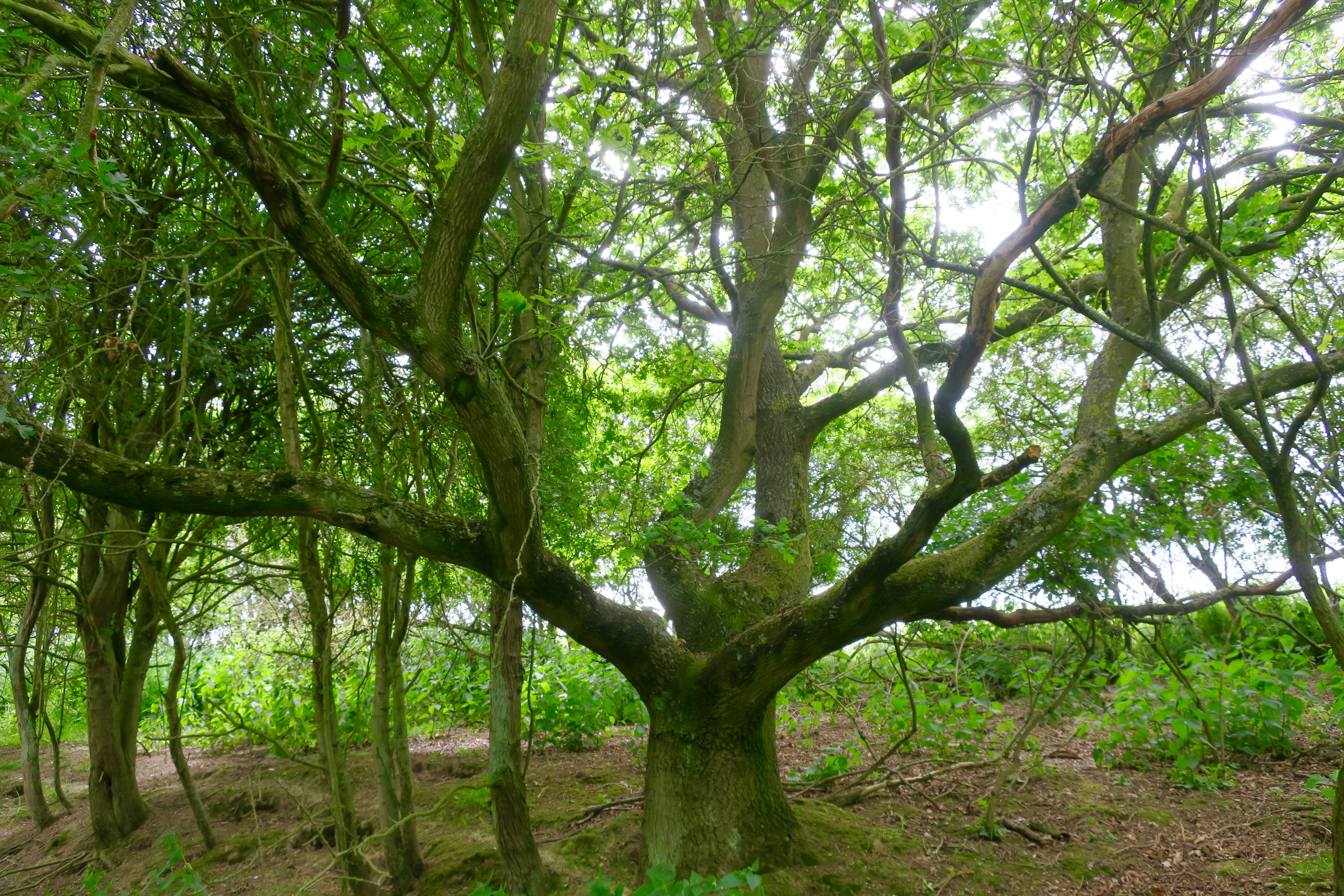


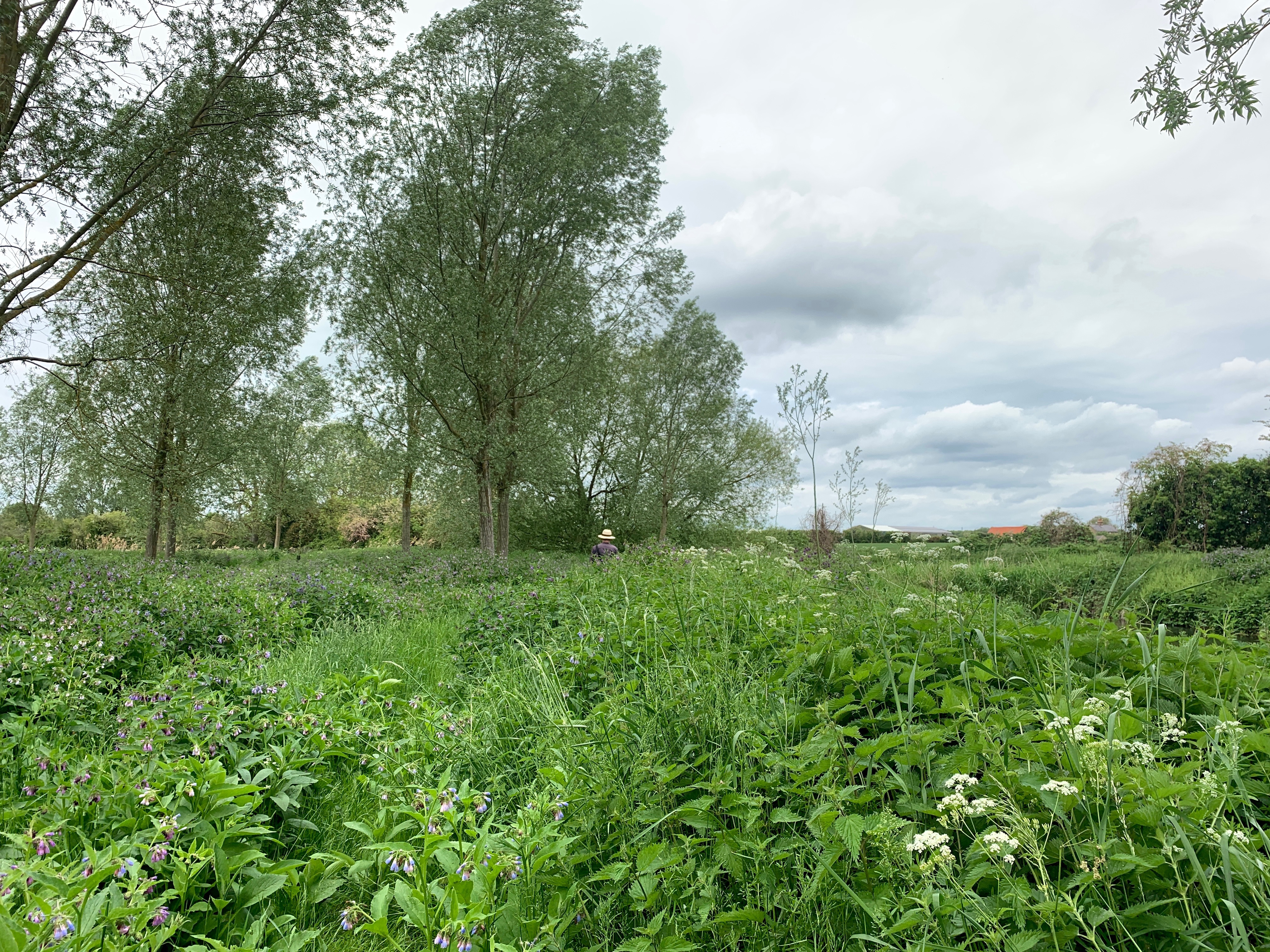




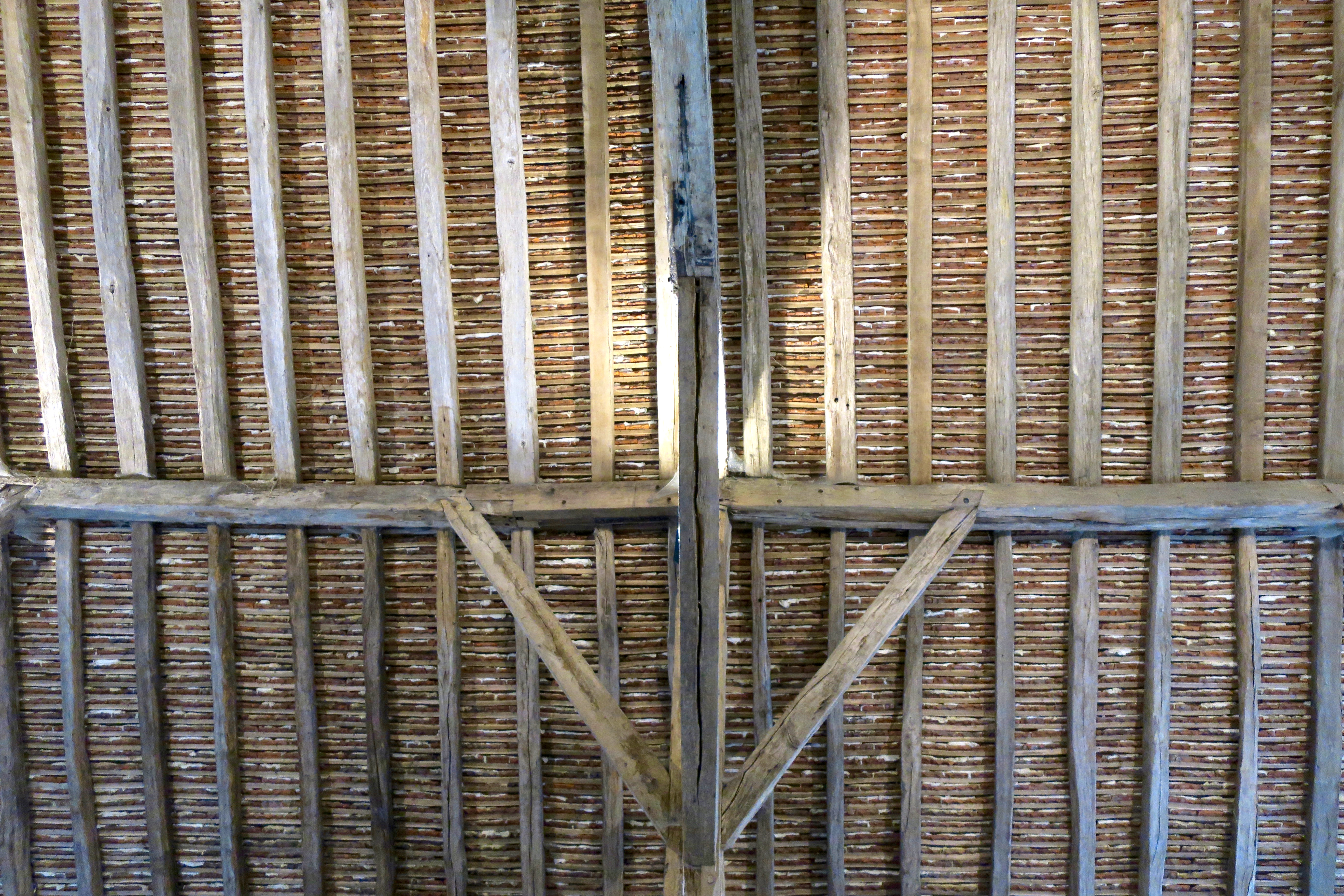









Hamer ye Framer, you are a mighty man! Thank you so much for persevering as far as you could . Marvellous stuff about comfrey. Walk on with hope in your heart!
Thanks for inspiring us to set out, your directions were good, we were just looking the other way!